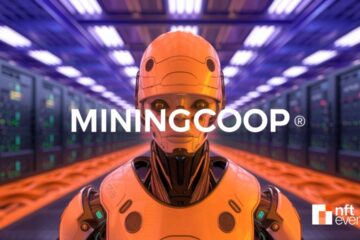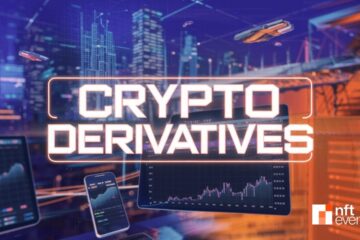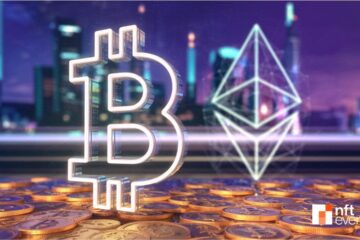Ethereum has long been hailed as the go-to platform for building decentralized applications, but it’s no longer the only choice. As blockchain technology advances, developers are looking for more scalable, cost-effective, and secure solutions. BlockDAG is rapidly gaining traction as a powerful alternative.
While Ethereum’s congestion issues and soaring transaction fees frustrate users, BlockDAG’s hybrid architecture (DAG + PoW) delivers unmatched transaction speed and cost efficiency. Additionally, its robust security measures and user-friendly development tools are making it the preferred option for many. As developers seek practicality and performance, BlockDAG is becoming an obvious choice.
Ethereum: From Inception to Present – A Decade of Growth
Ethereum, conceived by Vitalik Buterin in late 2013, was officially announced at The North American Bitcoin Conference in Miami in January 2014. The vision was to create a blockchain platform capable of running smart contracts and decentralized applications (DApps), offering more versatility than Bitcoin. To fund its development, Ethereum conducted a public crowdsale between July and August 2014, raising over $18 million by selling Ether (ETH) tokens to early supporters. Consequently, this successful crowdfunding effort marked one of the first major Initial Coin Offerings (ICOs) in the crypto space. On July 30, 2015, the Ethereum blockchain went live with its inaugural release, “Frontier.”
Initially, Ether was priced at approximately $2.77 in August 2015. Over the years, Ethereum’s price witnessed substantial volatility but maintained an overall upward trend. In November 2021, ETH reached an all-time high of around $4,865. However, as of March 28, 2025, Ether is trading at approximately $2,013.18, representing a significant drop from its peak but still showcasing remarkable growth from its early days.
Furthermore, Ethereum’s market capitalization has also seen significant shifts. As of March 26, 2025, the market cap stood at approximately $245.93 billion, reflecting a 43.98% decrease from the previous year’s $439.03 billion. This decline is largely attributed to increased competition from newer blockchain platforms and broader crypto market corrections. Despite this, Ethereum remains the second-largest blockchain by market cap, second only to Bitcoin.
In addition, the circulating supply of Ether has grown steadily as well. As of March 26, 2025, the total supply reached about 120.65 million ETH, reflecting a 0.48% increase from the previous year’s 120.07 million. This controlled increase is a result of the Ethereum 2.0 upgrade, transitioning from Proof-of-Work (PoW) to Proof-of-Stake (PoS), enhancing efficiency and sustainability.
Ultimately, Ethereum’s true success lies not just in numbers but in its revolutionary contributions to blockchain technology. The platform has enabled countless decentralized finance (DeFi) applications, non-fungible tokens (NFTs), and smart contracts, solidifying its status as the backbone of Web3 innovation and the decentralized internet.
BlockDAG vs. Ethereum: Why Developers Are Making the Switch
As blockchain technology advances, developers are increasingly opting for BlockDAG over Ethereum for several key reasons. First and foremost, scalability is at the forefront of this shift. While Ethereum struggles with congestion during peak usage, BlockDAG’s hybrid architecture (DAG + PoW) processes thousands of transactions per second without sacrificing speed or security. As a result, this makes BlockDAG an attractive option for developers looking to build high-performance applications.
Moreover, cost is another deciding factor. Ethereum’s transaction fees can soar during network congestion, while BlockDAG’s efficient structure significantly reduces fees, keeping them predictable and manageable. Consequently, developers appreciate the ability to maintain cost efficiency, especially in high-transaction environments.
When it comes to developer toolkits, BlockDAG offers a more comprehensive and accessible set of resources. Its Integrated Development Environment (IDE) and Token Creation Wizard make it easy to launch new tokens without writing extensive code. In contrast, Ethereum’s toolkit, while robust, can be intimidating to new developers and often lacks the user-friendly interfaces offered by BlockDAG.
Security is also a major consideration. Unlike Ethereum’s history of high-profile exploits that have raised concerns, BlockDAG’s unique architecture reduces attack vectors significantly. With parallel block validation and robust cryptographic protocols, BlockDAG has made security a main priority from the start.
Lastly, community support plays a vital role. BlockDAG’s vibrant and growing developer community is fueled by strong presale performance—raising $208.5 million across 27 batches. With an ROI of 2,380% since batch 1 and over 18.9 billion coins sold at the current price of $0.0248, BlockDAG’s momentum is undeniable. As a result, developers are joining not just for the technology but for the thriving ecosystem and support network that comes with it.
The Future of Blockchain Development: Why BlockDAG Stands Out
As blockchain technology continues to evolve, developers are making practical choices based on scalability, cost, security, and community support. Ethereum, while historically significant, struggles with high fees and congestion, leaving many developers searching for better alternatives. BlockDAG addresses these pain points with its hybrid architecture, lower transaction costs, and advanced security features. Moreover, the platform’s comprehensive toolkit and thriving community make development more accessible and rewarding. As the shift continues, it’s clear that BlockDAG is not just another blockchain project—it’s a solution designed to meet the demands of today’s developers while paving the way for more efficient, secure applications.
Presale: https://purchase.blockdag.network
Website: https://blockdag.network
Telegram: https://t.me/blockDAGnetworkOfficial
Discord: https://discord.gg/Q7BxghMVyu
 Bitcoin
Bitcoin  Ethereum
Ethereum  Tether
Tether  XRP
XRP  USDC
USDC  TRON
TRON  Lido Staked Ether
Lido Staked Ether  Dogecoin
Dogecoin  Cardano
Cardano  Figure Heloc
Figure Heloc  WhiteBIT Coin
WhiteBIT Coin  Wrapped stETH
Wrapped stETH  Bitcoin Cash
Bitcoin Cash  Wrapped Bitcoin
Wrapped Bitcoin  Chainlink
Chainlink  USDS
USDS  Binance Bridged USDT (BNB Smart Chain)
Binance Bridged USDT (BNB Smart Chain)  LEO Token
LEO Token  WETH
WETH  Hyperliquid
Hyperliquid  Wrapped eETH
Wrapped eETH  Stellar
Stellar  Monero
Monero  Ethena USDe
Ethena USDe  Coinbase Wrapped BTC
Coinbase Wrapped BTC  Litecoin
Litecoin  Sui
Sui  Avalanche
Avalanche  Zcash
Zcash  Hedera
Hedera  Shiba Inu
Shiba Inu  Dai
Dai  sUSDS
sUSDS  World Liberty Financial
World Liberty Financial  Toncoin
Toncoin  USDT0
USDT0  Cronos
Cronos  PayPal USD
PayPal USD  Ethena Staked USDe
Ethena Staked USDe  Mantle
Mantle  Uniswap
Uniswap  Polkadot
Polkadot  Aave
Aave  Bittensor
Bittensor  USD1
USD1  Bitget Token
Bitget Token  OKB
OKB  NEAR Protocol
NEAR Protocol 


